Every year, billions of dollars in drug sales shift from brand-name companies to generic makers. But how does a generic company get permission to sell a cheaper version of a drug before the patent expires? The answer lies in something most people have never heard of: Paragraph IV certification. It’s not a drug, not a law, not even a process most patients know about-but it’s one of the most powerful tools in modern healthcare, quietly reshaping drug prices and access.
What Is a Paragraph IV Certification?
A Paragraph IV certification is a legal statement filed by a generic drug company when it applies to the FDA to sell a copy of a brand-name drug. It doesn’t just say, “We’re making this drug.” It says, “Your patent on this drug is either invalid, won’t be infringed by our version, or can’t be enforced.”
This isn’t a casual claim. It’s a formal challenge under the Hatch-Waxman Act of 1984-a law designed to balance innovation and access. Before this law, generic companies had to wait until every patent expired before they could even start making their version. That meant years of lost savings for patients. Paragraph IV changed that. It lets generics challenge patents before they even produce a single pill.
Here’s how it works: When a brand-name drug gets approved, its patents are listed in the FDA’s Orange Book. Generic companies scan this list. If they see a patent they believe is weak-maybe it’s overly broad, maybe it’s just a minor tweak-they file an ANDA (Abbreviated New Drug Application) with a Paragraph IV certification. That’s the trigger.
The Legal Trick That Makes It Work
Here’s the strange part: Under U.S. patent law, making or selling a patented drug without permission is infringement. But the Hatch-Waxman Act says that simply filing an ANDA with a Paragraph IV certification counts as an “artificial act of infringement.”
That means the brand-name company doesn’t have to wait until the generic hits the market to sue. They can sue the moment the application is filed. It sounds backwards-like suing someone for planning to steal your car before they even turn the key. But it was designed to fix a real problem: without this rule, generic companies would risk launching at their own peril, facing massive lawsuits and damages if they lost.
This legal fiction creates a clear timeline:
- Generic company files ANDA with Paragraph IV certification.
- Within 20 days, they must notify the brand company and patent holder.
- The brand has 45 days to file a lawsuit.
- If they do, the FDA puts a 30-month hold on approving the generic.
That 30-month clock can stretch longer if the court case drags on. But it also ends early if the court rules in favor of the generic. This gives both sides a structured battlefield-no wild guesses, no surprise launches.
Why This Matters: The $500 Million Prize
The real incentive for generics isn’t just helping patients-it’s money. The first company to successfully challenge a patent gets 180 days of exclusive rights to sell their version. No competition. That’s huge.
For a blockbuster drug like Humira, which brings in over $20 billion a year, 180 days of exclusivity could mean $500 million in pure profit. That’s why companies like Teva, Mylan, and Sandoz spend millions on legal teams just to be first in line.
In 2023, first-filers earned $4.7 billion in extra revenue from this exclusivity window. But it’s not easy. Legal fees for a single Paragraph IV challenge average $12.3 million. Cases take nearly 29 months to resolve. And even if you win, you might not get the full 180 days. Many generics settle with brand companies, agreeing to delay launch in exchange for cash or other perks.
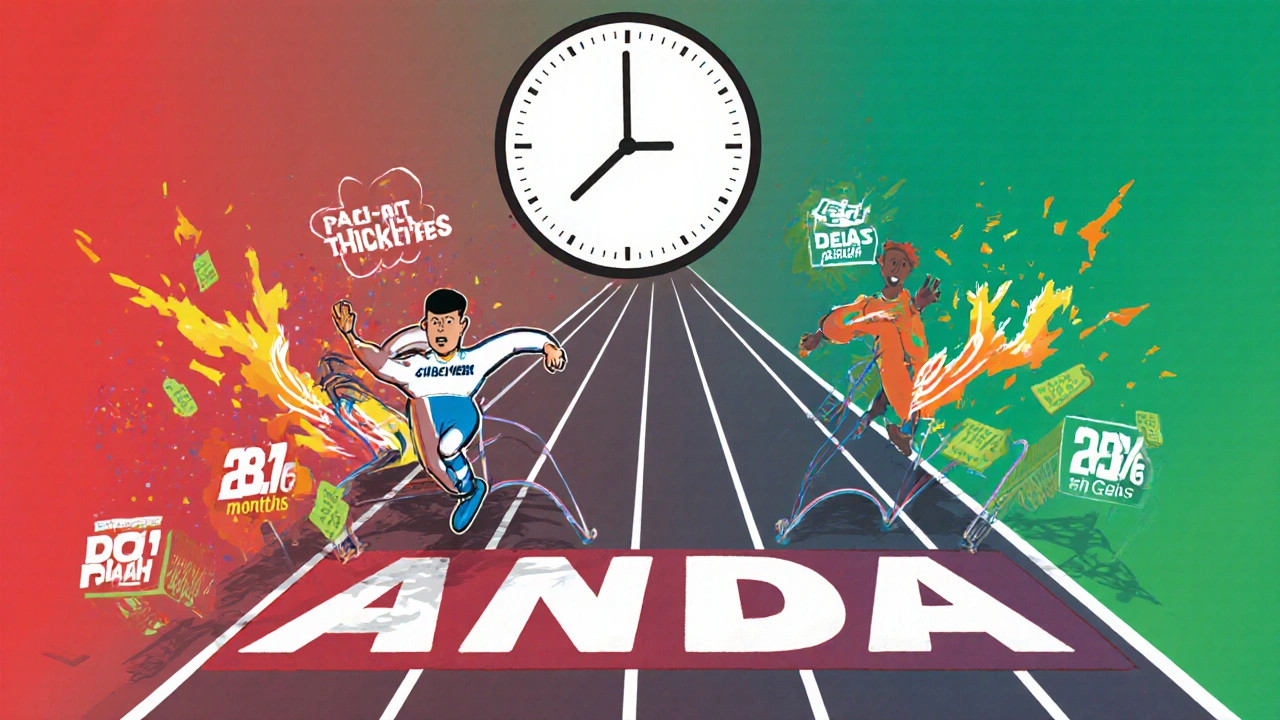
How Brands Fight Back: Patent Thickets and Pay-for-Delay
Brand companies aren’t sitting still. They’ve responded by listing more patents per drug. In 2005, the average drug had 7.2 patents listed in the Orange Book. By 2024, that number jumped to 17.3. This is called “patent thickets”-layering patents on tiny changes like dosage form, crystal structure, or packaging.
Each patent must be challenged individually. So a generic company might have to file multiple Paragraph IV certifications just to get one drug approved. That’s expensive and slow.
Another tactic: “pay-for-delay.” In 2024, 68% of Paragraph IV settlements included payments from brand companies to generics to delay launch. The FTC called these “anti-competitive.” In 2023-2024 alone, they sued 17 companies over these deals. The average payment? $187 million. These settlements often push generic entry back by 2-3 years.
Meanwhile, some brands do “product hopping”-slightly reformulating a drug right before a generic is due, then getting a new patent. This happened in 31% of Paragraph IV targets in 2024. The generic company has to start over, chasing a new patent.
How Generics Win: Carve-Outs and Smart Targeting
But generics aren’t helpless. They’ve learned to play the game smarter.
One trick is the “Section viii carve-out.” If a drug is approved for three uses-but only one use is patented-the generic can skip that use and sell the drug for the other two. For example, a heart drug might be approved for hypertension and heart failure. If only the hypertension use is patented, the generic can still launch with a label that says “for heart failure only.”
This works in about 37% of Paragraph IV cases. It’s legal, it’s smart, and it gets generics to market faster.
Another strategy: targeting drugs with fewer patents. Generic companies that focus on drugs with just one or two listed patents have a 27% higher success rate. They avoid thickets entirely.
And they’re using better tools. Over 89% of successful challengers use specialized software to analyze patents, track litigation trends, and predict court outcomes. These tools cost up to $500,000 a year-but they’re worth it.
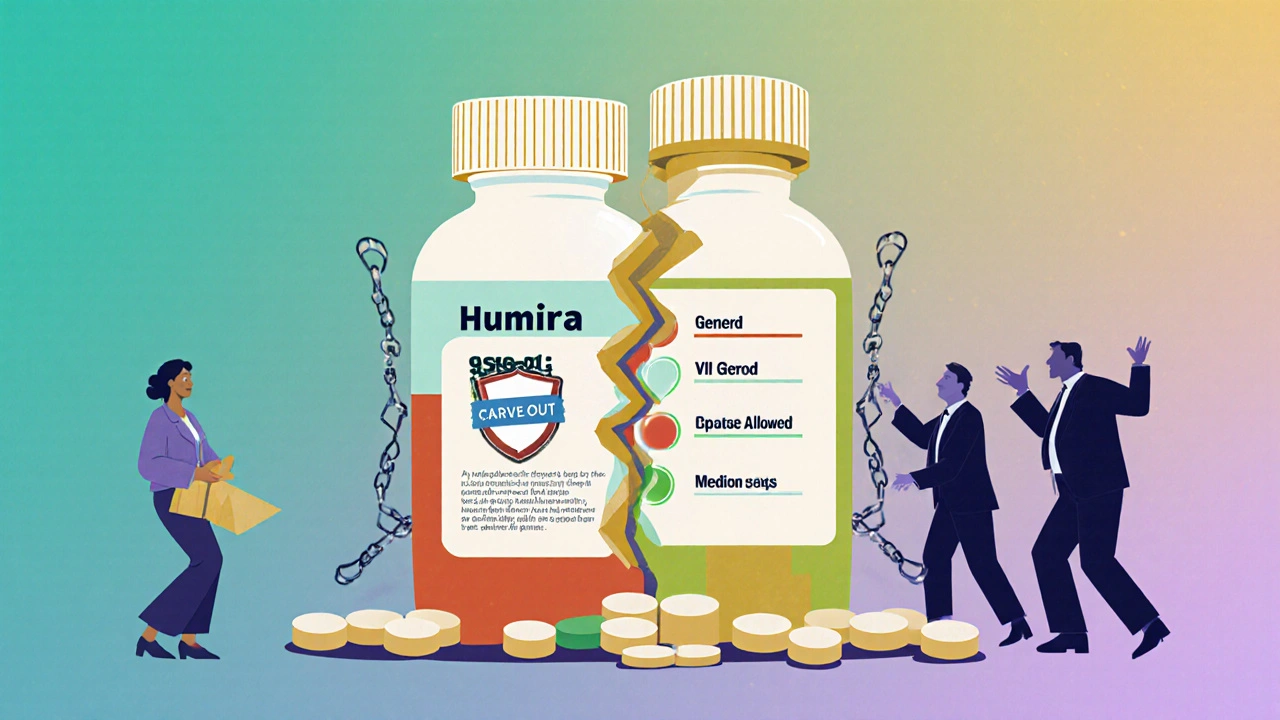
Who’s Winning? The Numbers Don’t Lie
In 2024, there were 1,247 Paragraph IV certifications filed-up from just 187 in 2003. That’s a 565% increase.
The top filers? Teva (147), Mylan (112), Sandoz (98), Hikma (87). The most challenged drugs? AbbVie’s Humira (28 challenges), Eli Lilly’s Trulicity (24), Pfizer’s Eliquis (21).
And success rates are climbing. Between 2003 and 2019, generics won about 41% of their challenges. Since 2020, that’s jumped to 58%. Why? Courts are becoming more skeptical of weak patents. The Supreme Court has made it harder to patent minor changes. That’s a win for generics-and for patients.
The Bigger Picture: Savings and Access
Every time a Paragraph IV challenge succeeds, drug prices drop. Fast.
Since 1984, these challenges have saved U.S. consumers $2.2 trillion. In 2024 alone, they saved $192 billion. Generic drugs now make up 90% of all prescriptions filled in the U.S. And Paragraph IV challenges account for nearly half of those entries.
The FDA says 90% of brand-name drugs now have generic versions. That’s thanks in large part to this system. Without Paragraph IV, many of those generics would still be waiting for patents to expire-years longer than they should.
But the system isn’t perfect. The 30-month stay often lasts longer-up to 36 months-because of court delays. And the cost of litigation pushes smaller generics out. Only big players can afford the legal bills.
What’s Next? Changes Coming
In October 2022, the FDA tightened rules around amending Paragraph IV certifications after a court ruling. Now, generics can’t just tweak their application to dodge a lost patent. They have to be upfront about changes in drug strength or structure.
In 2026, the FDA plans to require brand companies to justify every patent they list in the Orange Book. That could cut patent thickets by 30-40%. The FTC is also stepping up enforcement on pay-for-delay deals.
And while Paragraph IV works for small-molecule drugs, it doesn’t exist for biologics-complex drugs made from living cells. Biosimilars (the biologic version of generics) have a different, weaker system. That’s the next battleground.
For now, Paragraph IV remains the most effective tool for bringing down drug prices. It’s complex, it’s expensive, and it’s fiercely fought. But it works. And every time a generic wins, millions of patients pay less.
What happens if a generic company loses a Paragraph IV lawsuit?
If a generic company loses, the FDA cannot approve its drug until the patent expires. The company may still sell the drug after the patent ends, but they lose their chance at the 180-day exclusivity period. Many choose to settle before trial to avoid this risk, even if it means delaying their launch.
Can a brand-name company sue a generic company even if the patent is weak?
Yes. Brand companies often file lawsuits even when patents are questionable. Their goal isn’t always to win in court-it’s to delay the generic launch. A 30-month stay gives them more time to sell their drug without competition. This is why over 90% of Paragraph IV filings trigger litigation, even if the patent is likely invalid.
How long does a Paragraph IV challenge usually take?
On average, it takes 28.7 months from filing to resolution. But the FDA’s 30-month stay often stretches to 36 months due to court delays. If the case settles early, the generic may launch within 18-24 months. If it goes to trial, it can take 4 years or more.
What’s the difference between a Paragraph IV certification and a Section viii carve-out?
A Paragraph IV certification directly challenges a patent’s validity or infringement. A Section viii carve-out avoids the patent entirely by removing the patented use from the generic drug’s label. The first attacks the patent; the second sidesteps it. Both are legal under Hatch-Waxman.
Why don’t all generic companies file Paragraph IV certifications?
It’s expensive and risky. Legal fees average $12.3 million per case. If the generic loses, they lose their investment and must wait years to launch. Smaller companies often lack the resources to compete. Only firms with strong legal teams and deep pockets typically pursue this route.

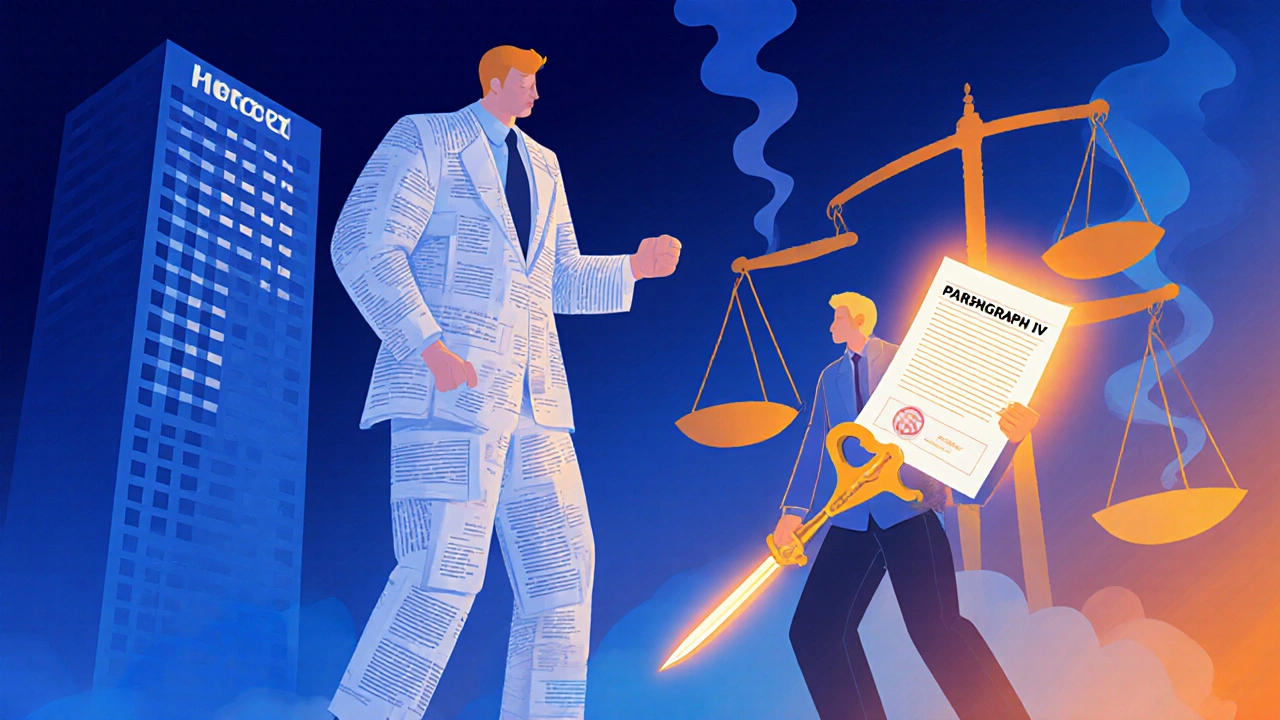
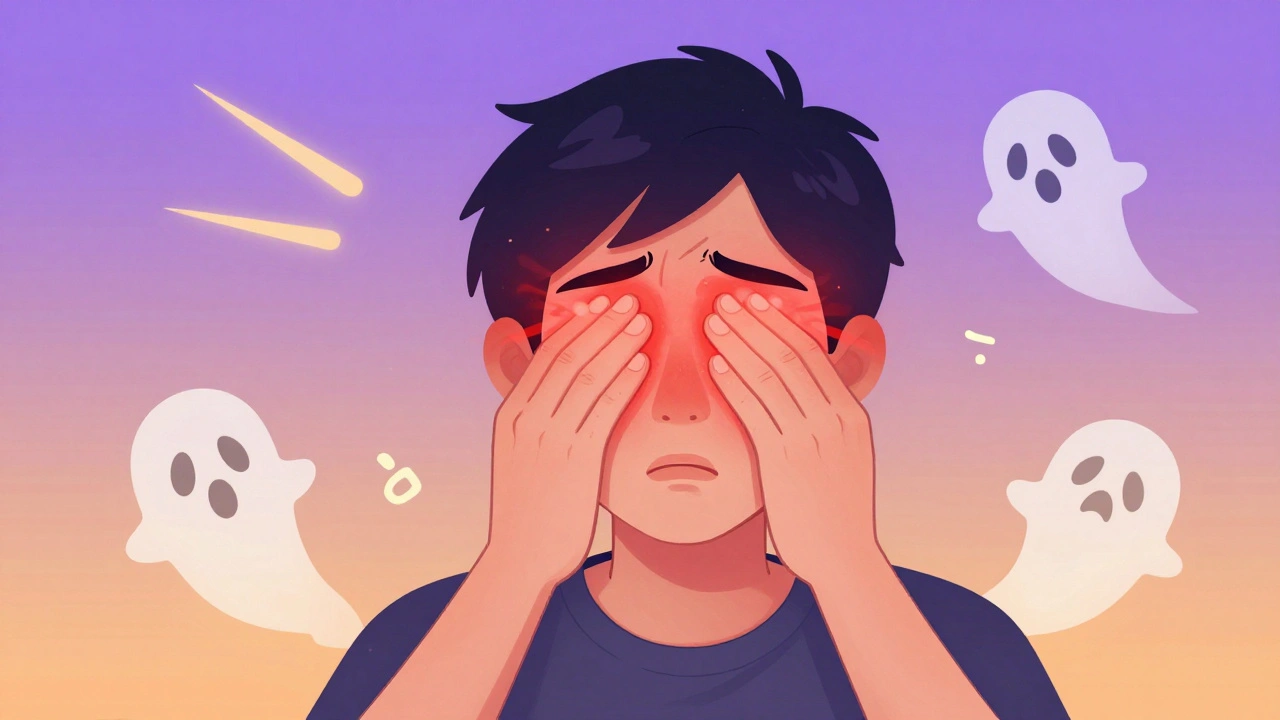

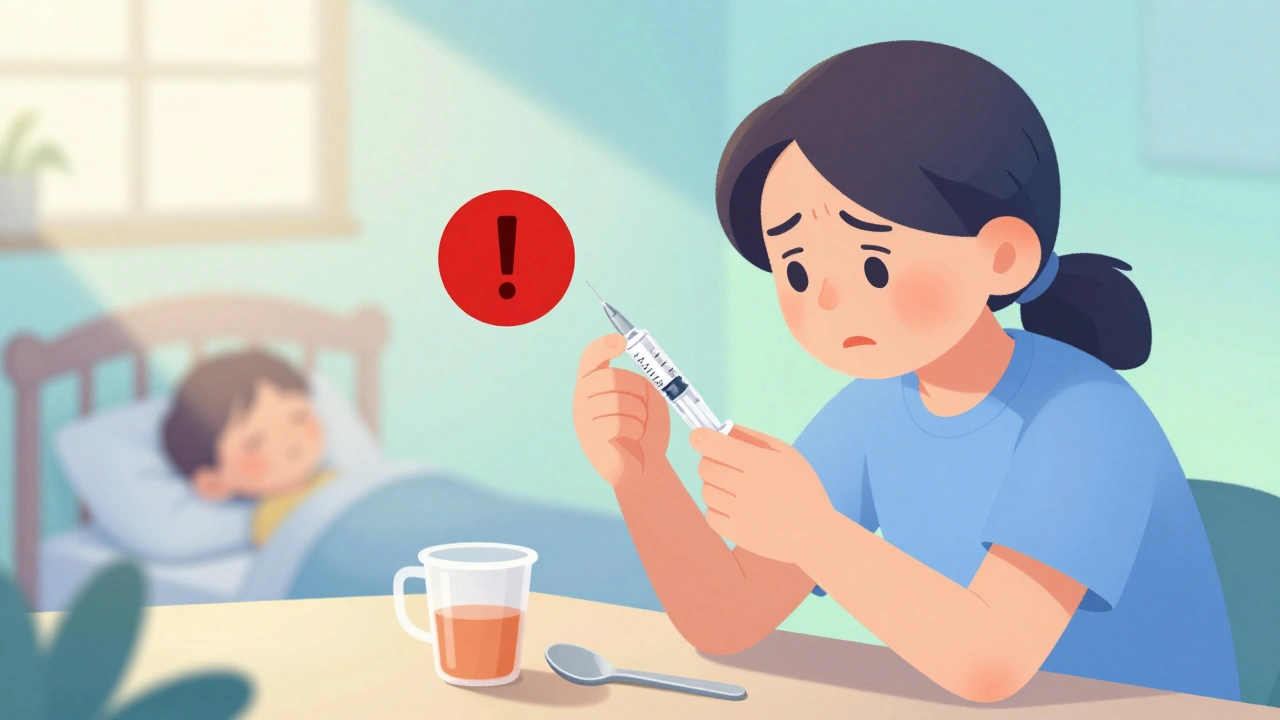

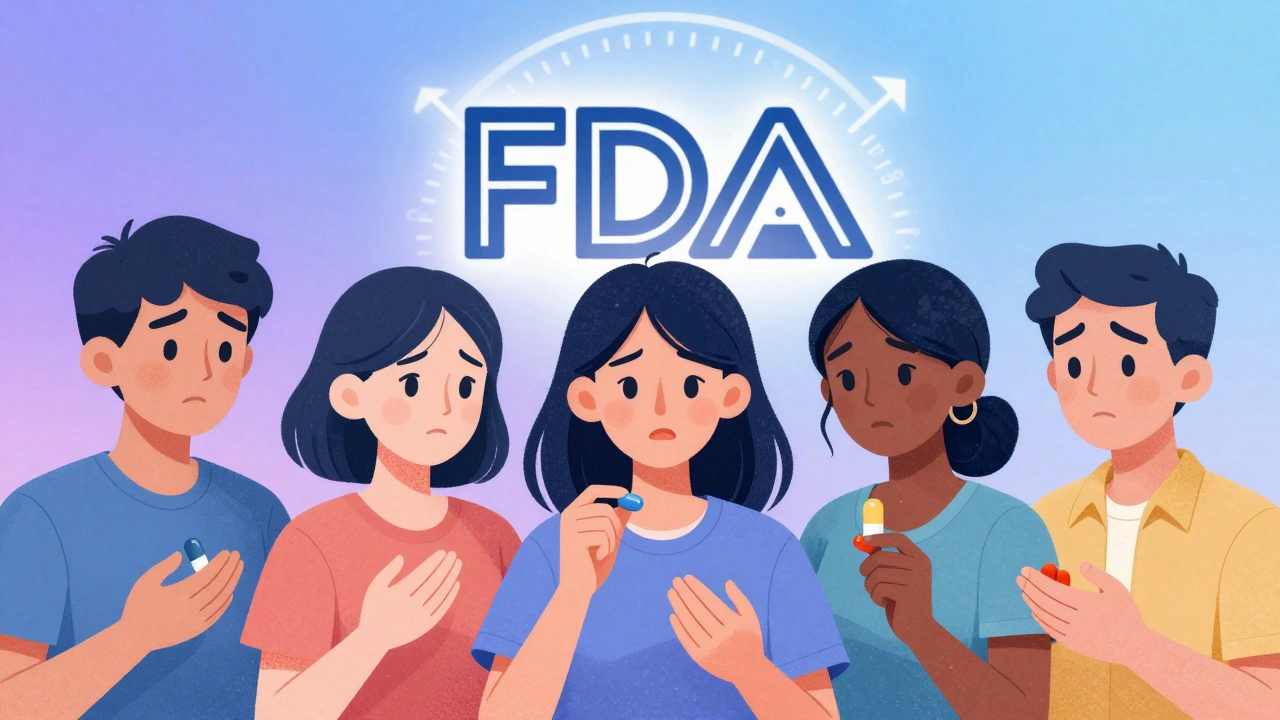
Kristi Bennardo
November 20, 2025 AT 21:44This system is a disaster disguised as progress. Generic companies are essentially legal pirates, exploiting loopholes to destroy innovation. The Hatch-Waxman Act was meant to balance access and incentive-but now, it’s a free-for-all where patent holders are hunted like prey. Why should a company invest $2 billion in R&D if some hedge fund-backed firm can just file a Paragraph IV and wait for the court to collapse your life’s work? This isn’t healthcare reform-it’s corporate warfare, and patients are the collateral damage.
Shiv Karan Singh
November 21, 2025 AT 01:39LOL imagine paying $12M to sue over a patent that’s clearly garbage 😂
India’s generics are way smarter-we don’t even bother with this drama. We just make the drug and let them sue us in court. By then, we’re already selling in 40 countries. USA system? Bro, it’s a tax on stupidity.
Also, pay-for-delay? That’s just bribery with a law degree. 🤡
Ravi boy
November 21, 2025 AT 23:43so basically generic companies are playing chess while big pharma is playing checkers
and the patients win either way
also the fact that they can skip patented uses with section viii is genius
why make it harder when you can just not do the thing they own
also i dont get why people act like this is some evil scheme its just capitalism working for once
also teva and mylan are the real heroes here
and the 180 day exclusivity? yeah that’s a lot but they risked millions and lost years
so yeah i say more of this
also the patent thickets thing is wild
like you patented the color of the pill now?
also the 90% of prescriptions being generic is kinda beautiful honestly
Matthew Karrs
November 22, 2025 AT 06:11They’re not challenging patents. They’re exploiting a rigged system. Did you know the FDA’s Orange Book is full of ghost patents-ones that were never even examined properly? Big Pharma pays lobbyists to stuff it full of junk patents just to trigger the 30-month stay. The lawsuits aren’t about validity-they’re about time. Every single Paragraph IV filing is a delay tactic disguised as competition. And the 180-day exclusivity? That’s not a reward-it’s a cartel. One company gets a monopoly on the monopoly. It’s all smoke and mirrors. The real winners? Law firms. The losers? Everyone else.
Matthew Peters
November 22, 2025 AT 23:10Okay but let’s just pause for a second-this entire system is one of the most brilliant, messy, beautiful examples of American capitalism in action.
You’ve got billion-dollar pharma empires vs. legal sharks with spreadsheets and $500k software. It’s like Game of Thrones but with patent attorneys and FDA forms.
And yet-millions of people get insulin for $25 instead of $300 because of this. That’s not just policy. That’s human impact.
The fact that courts are starting to reject weak patents? That’s progress. The fact that generics are using AI to predict litigation outcomes? That’s innovation.
Yeah, it’s ugly. Yeah, it’s expensive. But it’s working. And honestly? We need more of this chaos.
Liam Strachan
November 23, 2025 AT 22:01I think this is actually a really balanced system overall. Sure, there are abuses-pay-for-delay, patent thickets-but the fact that generics can even challenge patents at all is a huge win for patients. I’ve seen friends struggle to afford meds, and this is what makes the difference between taking their pills or skipping doses.
It’s not perfect, but it’s the best we’ve got. And the trend toward courts rejecting weak patents? That’s encouraging. Maybe we just need more transparency and fewer settlements.
Also, big props to the small companies trying to enter the space. It’s not easy, but they’re trying.
daniel lopez
November 24, 2025 AT 02:09THIS IS A COORDINATED ATTACK ON AMERICAN INNOVATION. The FDA, the courts, the generics-they’re all in bed together. Who funds these generic companies? Chinese state-backed investors? Big Pharma is being dismantled from the inside by foreign interests. The 180-day exclusivity? That’s not a reward-it’s a backdoor subsidy for communist-aligned corporations. And the Section viii carve-out? That’s intellectual property theft dressed up as ‘legal strategy.’ The government is letting foreign entities steal our medical breakthroughs while we sit here watching. Wake up. This isn’t about savings-it’s about control.
Nosipho Mbambo
November 25, 2025 AT 01:48...I just... I don’t understand why this is so complicated? Why can’t we just... let generics make the drug after 10 years? Why do we need lawyers, software, lawsuits, carve-outs, thickets, settlements, artificial infringement, 30-month holds, FTC lawsuits, pay-for-delay deals, product hopping, and $12 million in legal fees just to make a pill cheaper? It’s like we built a Rube Goldberg machine to lower drug prices-and now we’re all trapped inside it, covered in glitter and paperwork. I just want to buy insulin without filing a patent challenge. Is that too much to ask?!!??